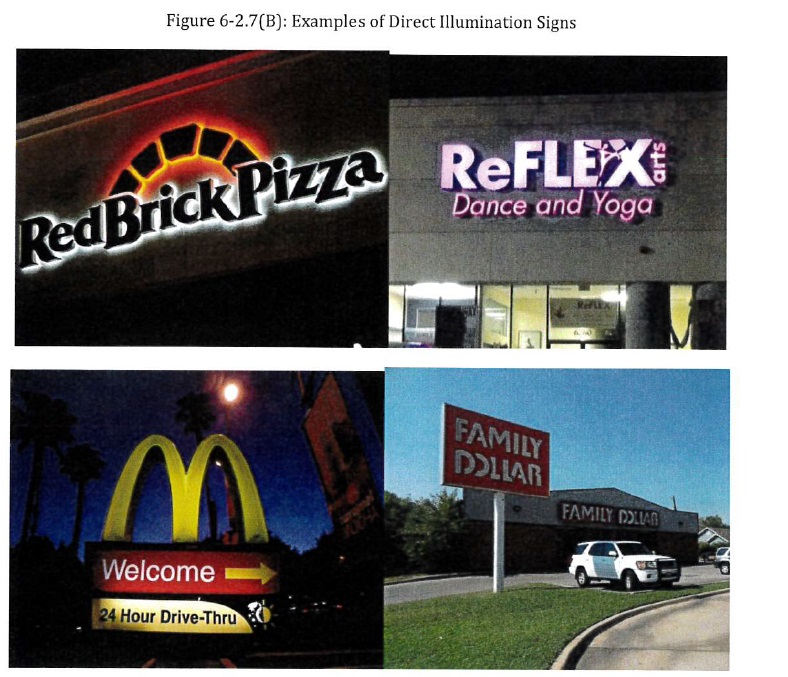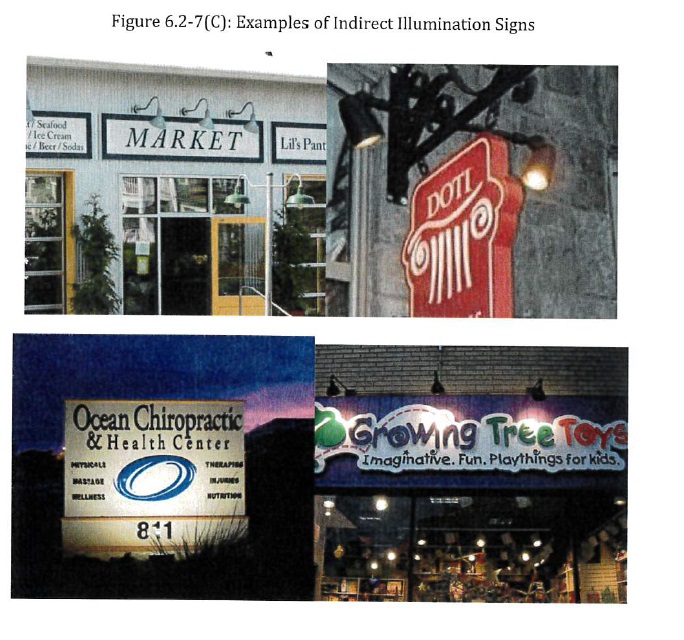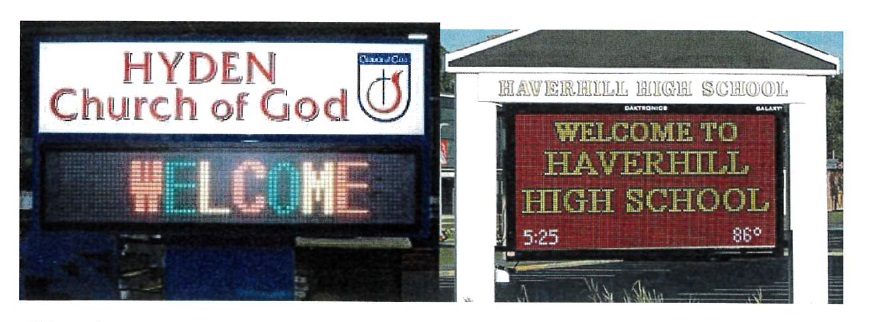Any sign illuminated by a direct or indirect source of light including but not limited to neon, fluorescent, incandescent, light-emitting diode (LED), or other similar lighting or light-producing element shall adhere to the following provisions in addition to all other applicable regulations.
A. All illuminated signs.
1. Signs may be illuminated by a direct or indirect source of light, provided the indirect light source is shaded, shielded or directed so that no direct rays or glare emanating from the light source are visible from any public right-of-way or abutting property.
2. Unless otherwise stated in this chapter, the average level of illumination on the vertical surface of any direct or indirect illuminated sign shall not exceed three (3) foot-candles, unless permitted ground-mounted or bottom-mounted lighting fixture is used, in which case the average level of illumination on the vertical surface of the sign shall not exceed two (2) foot- candles. A foot candle is defined as a unit of illuminance or light falling onto a surface. One foot candle is equal to one lumen per square foot. A lumen is the basic measure of the quantity of light emitted by a source.
3. No sign shall have flashing, scrolling, intermittent, fluttering, or animated illumination which has changing light intensity, brightness or color, or simulates movement unless otherwise expressly permitted with this chapter.
4. No illuminated sign shall be permitted within one hundred (100) feet of property in any residential district unless the illumination of such sign is so designed that it does not shine or reflect light onto such property. Any illuminated sign that is permitted in a residential district shall not reflect light or shine onto any property in the residential district except the property on which the sign is located.
5. Illuminated signs shall be shielded so as to prevent beams or rays of light from being directed at any portion of a public right-of-way or adjacent property. Illumination intensity or brilliance shall not cause glare or impair the vision of motorists, and shall not interfere with any driver's operation of a motor vehicle.
6. Any outdoor open-faced sign where the source of illumination is uncovered or exposed, such as but not limited to, neon tubing, LED lighting, or other exposed illumination source is prohibited unless otherwise expressly permitted in this chapter. See Figure 6-2.7(A).


7. All lighting shall meet all applicable state electrical codes.
B. Direct illumination signs. For the purposes of this chapter, a sign illuminated from an internal light source so that light shines through a translucent surface or where the silhouette of alphabetic or numeric characters, symbols, or logos are illuminated as a result of the light source illuminating the background shall be considered a direct illumination sign. See Figure 6-2.7(B).

1. Channel letter type signs may use neon tubing as an internal illumination source, provided that the light source is shielded by translucent face or that a silhouette type sign is used where the light source illuminates the sign background and the letters or symbols are opaque.
2. With the exception of backlit signs, it is recommended that direct illumination signs consist of light colored letters or symbols on a dark background to improve visibility.
C. Indirect illumination signs. For the purpose of this chapter, a sign illuminated primarily by light being directed toward, across, or from behind and not from within the sign structure is considered an indirect illumination sign. See Figure 6-2.7(C).

D. Electronic message center (EMC) signs. An electronic message center (EMC) sign is an electronically activated changeable copy sign that can be programmed manually or by computer to display message content during a fixed duration of time. See Figure 6-2.7(D).


Where electronic message center signs are permitted they must conform to the following regulations:
1. No sign shall be brighter than is necessary for clear and adequate visibility and shall not exceed a maximum of 7,500 cd/ m2 during daylight hours or greater than 750 cd/ m2 between dusk and dawn so as not to cause glare or impair the vision of motorists, and shall not interfere with any driver's operation of a motor vehicle.
2. Such sign shall come equipped and be controlled by either a combination of a photosensor and a time switch, astronomical time switch, or other manufacturer installed dimming technology that automatically adjusts the brightness in direct correlation with ambient light conditions.
(Ord. No. O-21-06-15-5, §1, 6-15-21)